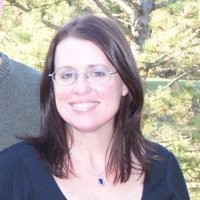This YMCA in Quincy, Massachusetts, was just one of 900 affected by the organization's new leadership development program. (Photo courtesy of Wikimedia Commons)
At the YMCA, successful leadership isn’t measured in bottom-line results or dividends to stakeholders. This national nonprofit organization measures its leaders on how well they drive personal and social change in the communities where they operate.
Its original leadership training program didn’t fully reflect this cause-driven focus, however. So when the national organization, YMCA of the USA, launched a change initiative to revitalize the YMCA brand several years ago, the learning group saw it as an opportunity to revamp the program. “It’s been a long journey,” said Sarah Finch, manager of leadership development for national organization.
After failing to find any off-the-shelf leadership models to address the needs of a nonprofit,cause-driven organization, the team decided to build its own. They began by conducting hundreds of interviews with local YMCA leaders and employees on what constitutes superior performance. “That allowed us to get at the successful behaviors that are consistently demonstrated at various leadership levels,” said Terri Radcliff, vice president of talent and knowledge management.
Using that data, they identified 18 skills, including communication skills, the ability to influence and relationship-building. They organized those skills around four leadership categories — front line staff, team leaders, branch leaders and organizational leaders — and defined specific skills and behaviors that demonstrate success in these areas.
Many of the skills can be found in any organization, but their definition and the behaviors that reflect them are unique to the Y, said Sue Mackey, senior director of talent management. “When you think about influence, for example, you usually think about a person’s negotiation skills. But at the Y, influence is all about the ability to collaborate in the community to achieve mutual benefits.”
Using the skills as a foundation, the team developed a learning and development program based on the 70-20-10 model — 70 percent of learning will come from on-the-job experiences, 20 percent from coaching and 10 percent from formal training. Each skill includes examples of real life experiences employees can participate in as part of the 70 percent, Finch said. For example, an employee who wants to develop the philanthropy skill might volunteer to run a United Way campaign or shadow a lead fundraiser when they meet with donors. “Through the act of doing that, they gain the knowledge or experience they need to become better leaders,” Finch said.
For the learning programs, the team adapted some of its existing leadership courses to better reflect the skills, and developed new courses to fill in any gaps. The group already had courses on how to be a better coach; they added a workshop to introduce the new model to leaders and help them identify ways to introduce it to their staffs.
In 2009, the team rolled out the YMCA Leadership Competency Development Guide to all of the 900 distinct YMCA organizations across the country. “It was very warmly embraced, particularly at thelarger Ys that had been looking for more leadership development tools,” Radcliff said.
But she said it was a little overwhelming for some of the smaller Ys that don’t have training staff on-site. “The smaller Ys are more resource-constrained and they need more support,” she said. “An 80-page PDF document was a lot for them to take in.”
When the national organization started getting feedback from the smaller Ys that it was too much, they adapted some of the content into simplified companion pieces and offered online and in-person workshops to help them develop a modified rollout plan. Eventually, they encouraged each YMCA to adopt the program to fit its needs.
Everyone’s a Leader
One of the biggest challenges for Fernán Cepero, chief human resources officer for the YMCA of greater Rochester, New York, was figuring out how to bring existing staff up to speed on the new program — without ignoring the needs of new employees. “We hire about 900 people per year, and we didn’t want to leave them out,” he said.
He decided to roll out the program on two parallel tracks. The first focused on getting existing staff certified under the new leadership model so they could all align on the program’s language and goals. Cepero said he wanted to make sure they didn’t feel like their past efforts and certification would be wasted. “Wisely, headquarters created a bridge conversion chart to help folks understand what their existing certifications mean in the new model and how to close any gaps.”
At the same time, he rolled out the hiring component of the leadership program, through which all candidates are assessed based on their existing leadership skills and where they might fall short. That assessment process enabled his team to make better hiring decisions, and he said it became the first piece of their career development path. “Everyone we hire is recognized as a level one leader, and they understand what skills they need to develop move up the next tier. So they were fully vested in the leadership model from day one.”
Cepero said the program is also applicable for part-time workers, which make up the vast majority of his staff — of 3,000 employees, only 250 work full time. That has had a big effect on hiring and internal promotions. Last year, his organization lost 50 percent of its full-time staff. Because of the leadership assessment and development track, he was able to replace 30 percent of that turnover with part-time employees who had been actively working on their skills. “It’s given us a lot more bench strength in our part-time ranks.”
The Mission Behind the Method
Carol Parks, senior vice president and chief administrative officer for Suncoast YMCA in Clearwater, Florida, said she was a little overwhelmed by the new program when it first came out. “We didn’t know where to begin,” she said. Using the guide, she initially tried rolling it out on her own, but after six months she hadn’t seen a lot of success, and reached out to the national organization for help. “We needed someone to facilitate our rollout, and help us identify some best practices.”
The national organization sent trainers to Suncoast to help them explain how the model aligned with the broader YMCA culture and vision. “Once they started talking about it being a ‘cause-driven’ model and not just a list of leadership skills, it started to make sense for people,” Parks said. “Competencies can sound so technical, but they helped us see the mission behind it.”
The national team also helped her simplify components of the program for part-time workers that felt more achievable. With their help, she relaunched the program, creating development plans based on the skill models for every staff member, from exercise instructors up to the CEO.
Each plan used specific language from the guide identifying the skills required for their current position, what to do if they had gaps, and areas to develop to move to the next level. She also adapted all job descriptions and performance evaluations using the program language, and identified the best on-the-job experiences employees could pursue as part of their development process.
Suncoast is still tweaking the program, but it has already seen proof of its effect on key performance metrics, including increases in the percentage of volunteers who say they would volunteer again and members who report the Y has had an effect on their lives or community.
Parks said leaders in the organization are better prepared to engage with the community, connect with people and build relationships than they were before. “They know they have these competencies and that their capabilities have been tested. That makes them feel more confident in their leadership skills,” she said.
Despite early challenges, rollout of the leadership skill model has been widely lauded as a success by the national organization. While each local YMCA operates as its own independent organization, free to embrace or ignore the programs as it sees fit, more than 90 percent of the largest Ys are using it and additional smaller Ys are rolling it out every day. “It is a phenomenal adoption rate, especially because they are not obligated to participate,” Radcliff said.
The national organization also continues to offer face-to-face workshops and online training tools to help all of the organizations hone their coaching skills and adapt the program to their needs. “It’s important to make it customizable so it is consumable over time,” Mackey said. Every group is encouraged to adopt it at their own pace. “We’ve found that a slow steady rollout is the key. That is what makes it stick.”















